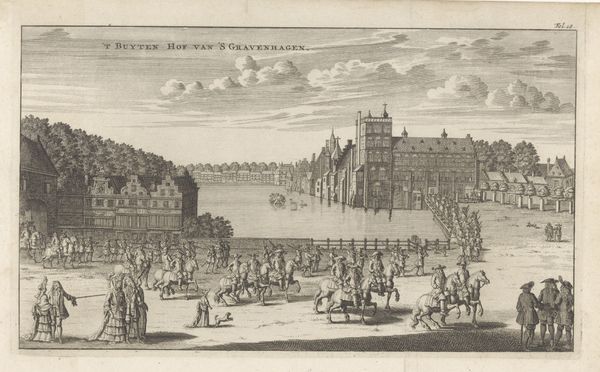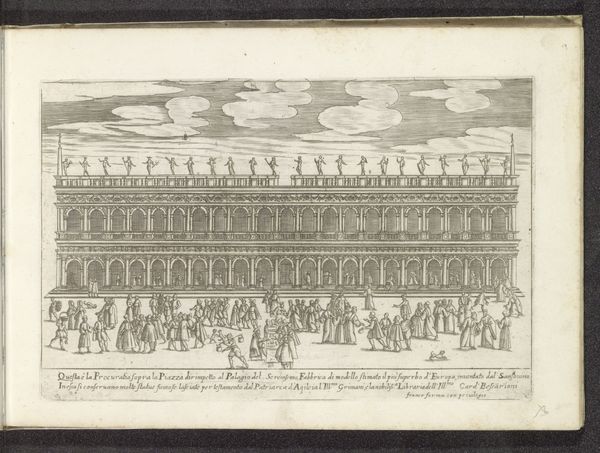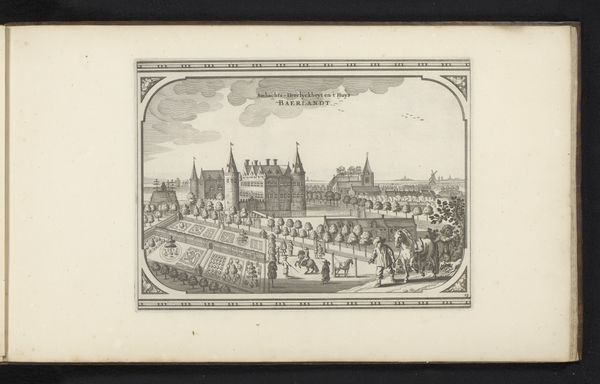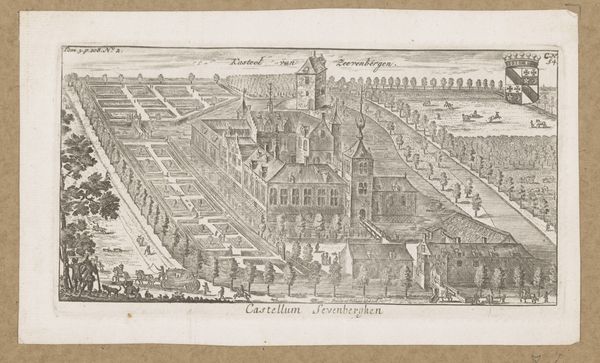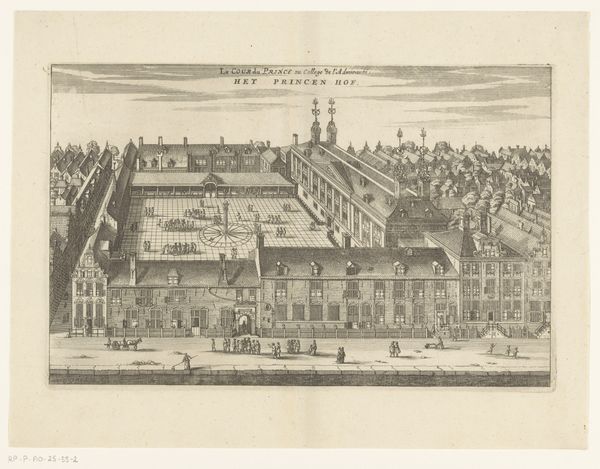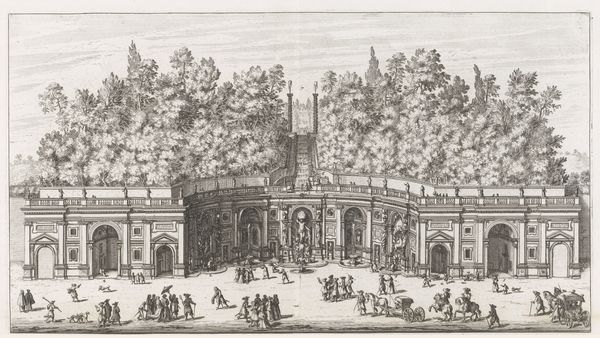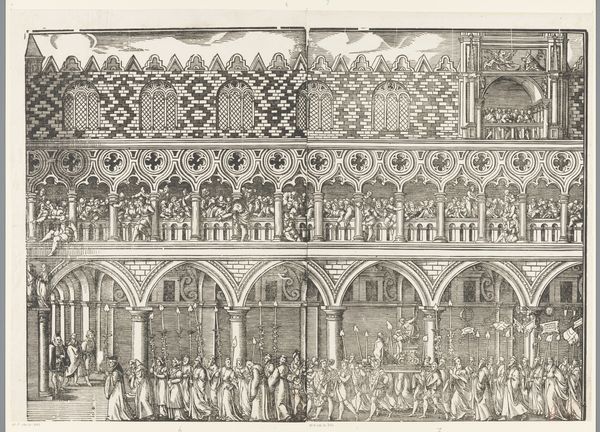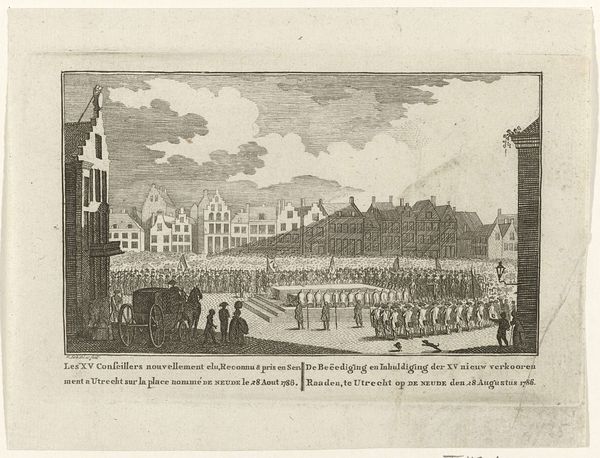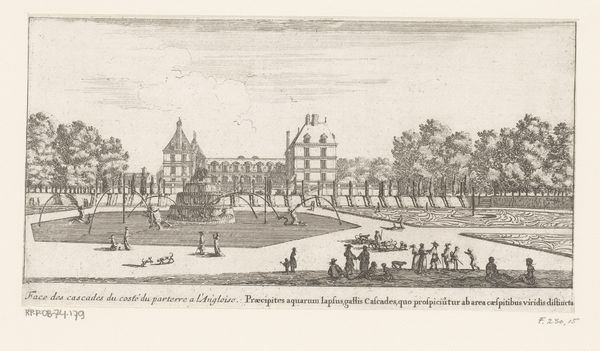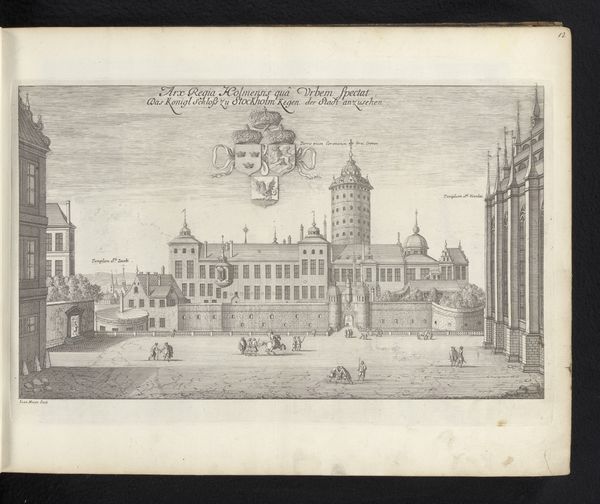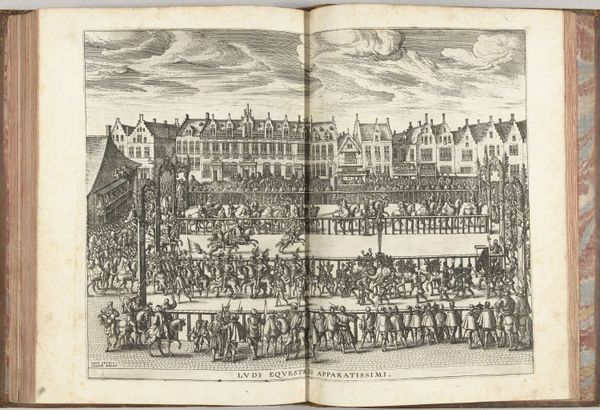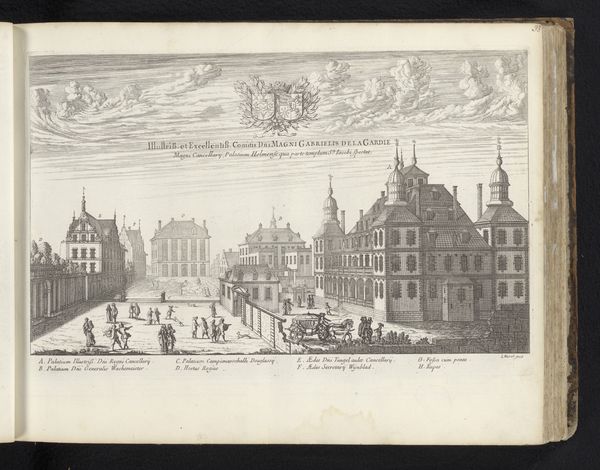
print, engraving, architecture
# print
#
perspective
#
cityscape
#
history-painting
#
italian-renaissance
#
engraving
#
architecture
Dimensions: height 196 mm, width 287 mm
Copyright: Rijks Museum: Open Domain
Editor: Here we have a 1610 engraving called "Façade van het Dogepaleis te Venetië," or "Façade of the Doge's Palace in Venice," attributed to an anonymous artist. The sheer detail is striking; you can almost feel the texture of the stone. What draws your eye? Curator: What immediately strikes me is the labor embedded in its production. Think of the skilled hand meticulously cutting those lines into the metal plate, the precise chemical processes required to create the print. This wasn't just about depicting Venice; it was about mastering a specific and demanding mode of production. Editor: So, it's less about the scene itself and more about how it was created? Curator: Precisely. And the social context intertwined with the materials. Where did the copper come from? Who labored to mine it? This print wasn't just consumed as art, but also as a commodity. Think of its place within trade networks and how it represented Venice to a wider audience. Is it truly anonymous or does its very making represent a certain school or workshop where its labour process could be mapped and understood? Editor: I hadn't considered the sourcing of the materials involved; it's easy to just see the image. Does the act of engraving change how we understand the Doge’s Palace? Curator: Absolutely! It’s no longer just a static architectural monument, but evidence of production. The print flattens and disseminates, and is thus detached from its unique architectural context as it is converted to another context in book or print form to become something different. By analyzing the print as a product of labour, and consumption, we start to engage with wider dynamics of 17th century Italian society. It makes you wonder who it was marketed for, and the other engravings that may have been printed alongside this. Editor: It really shifts your focus. Instead of just appreciating the facade, you start to think about the entire system that made this image possible. Curator: Indeed. The material and social conditions are never neutral. It is worth doing more research on printmaking and book illustration practice at the time to help contextualize this image. Editor: That’s a completely different perspective from what I would have thought of originally. Thanks for broadening my view.
Comments
No comments
Be the first to comment and join the conversation on the ultimate creative platform.
